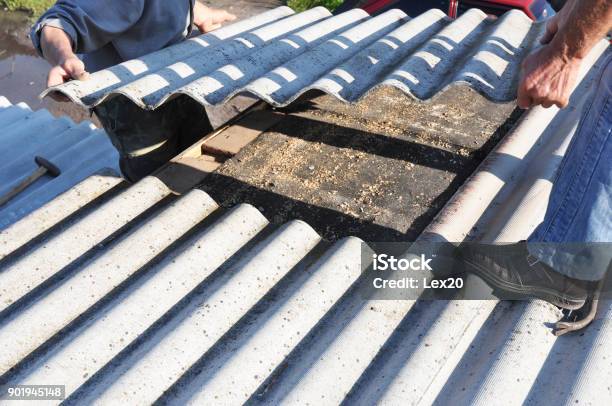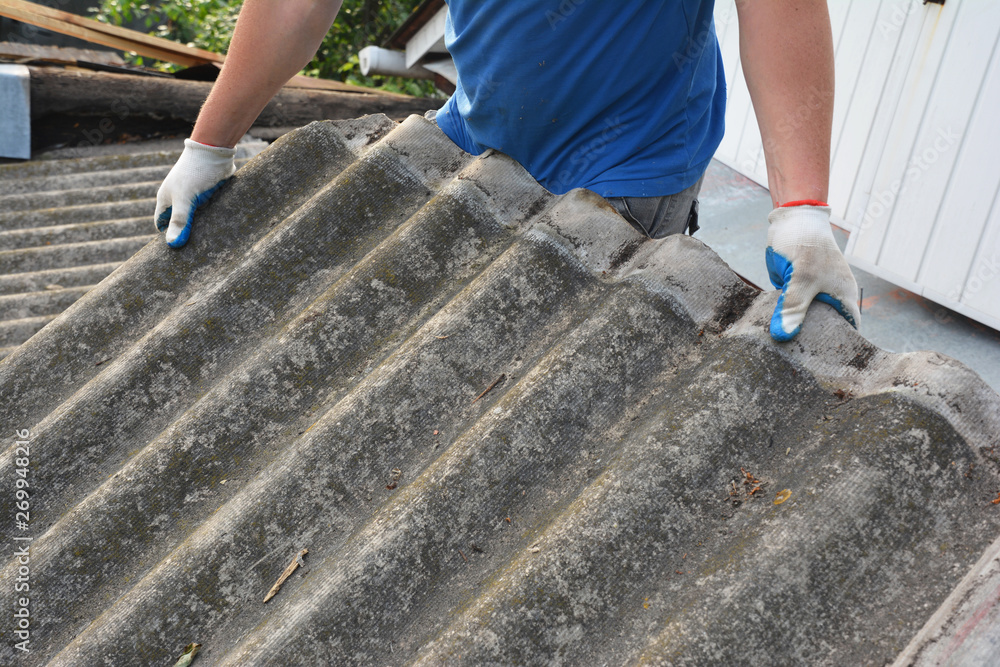Successful Asbestos Roof Removal Stories Find A Licensed Asbestos Removalist
Successful Asbestos Roof Removal Stories Find A Licensed Asbestos Removalist
Blog Article
Asbestos Regulations Affecting Roof Removal Removal & Replacement Of Roof Asbestos

Asbestos is a naturally occurring mineral that has been extensively used in construction materials due to its fire-resistant properties and durability. However, the health risks related to asbestos exposure have turn into increasingly clear over time, leading to stringent regulations and guidelines for its removal, generally known as asbestos abatement guidelines. These guidelines goal to attenuate the risk of exposure to asbestos fibers during removal and demolition activities.
Understanding the importance of proper asbestos abatement procedures is crucial for each workers and the general public. When asbestos-containing materials are disturbed, microscopic fibers can become airborne, leading to inhalation and potential critical health points such as lung most cancers and mesothelioma. This heightened awareness has prompted the event of complete guidelines that should be adhered to by professionals concerned in asbestos abatement.
Prior to commencing any abatement project, it's essential to conduct an intensive assessment of the location. This entails identifying the presence of asbestos-containing materials, assessing their situation, and evaluating the potential risks. A qualified inspector, usually educated and authorized, usually performs this assessment. This preliminary step ensures that every one essential precautions can be taken during the removal process.
Once the assessment is full, the following section includes growing a detailed abatement plan. This plan should outline the methods to be used, safety measures to be implemented, and waste disposal procedures. It should include the precise work practices that shall be followed to ensure the protection of both staff and occupants nearby. Communication with all stakeholders is paramount at this stage to make sure everyone understands the procedures and safety measures in place.
Resources For Asbestos Roof Liability Coverage Find A Licensed Asbestos Removalist
Personal protective equipment (PPE) is a crucial component of asbestos abatement guidelines. Workers involved within the removal process must put on acceptable gear, together with respirators, disposable coveralls, gloves, and goggles. This PPE serves as a barrier between the worker and doubtlessly hazardous materials, lowering the chance of inhalation or pores and skin contact with asbestos fibers.
Containment is another essential factor of safe asbestos abatement. The work space should be clearly delineated to stop unauthorized access. This often involves the use of plastic sheeting to seal off the area and prevent asbestos fibers from escaping. Negative air pressure units may also be utilized to guarantee that any airborne fibers are contained throughout the designated work web site.
Wet methods are beneficial for asbestos removal when possible. By dampening materials, the release of asbestos fibers into the air is considerably lowered. This practice points to the importance of making certain that the environment stays moist in the course of the removal process. In addition, removing asbestos as whole sections or items, as a substitute of breaking them aside, further minimizes the danger of releasing fibers.
After the removal process is complete, thorough cleansing of the work space is important. This entails the use of specialized vacuums outfitted with HEPA filters to ensure that any residual asbestos fibers are successfully captured. Additionally, all surfaces have to be completely wiped down, and air checks are often conducted to verify that no asbestos fibers remain in the environment.
Importance Of Professional Asbestos Removal Residential Asbestos Removal Services
Proper disposal procedures for asbestos waste are outlined in the guidelines to prevent exposure to asbestos in landfills or other disposal sites. Asbestos-containing materials should be double-bagged in leak-tight containers and transported in accordance with local regulations. Only designated disposal sites which are outfitted to deal with hazardous waste should receive asbestos materials.

Training and certification are also basic components of the guidelines. All personnel involved in asbestos abatement must bear a rigorous training program centered on safe work practices, hazard recognition, and emergency response strategies. This training ensures that employees are competent in managing the inherent risks associated with asbestos and may intervene successfully in case of an emergency.
Compliance with native, state, and federal regulations is not only a best practice however a legal requirement. Agencies such because the Environmental Protection Agency (EPA) and the Occupational Safety and Health Administration (OSHA) have established regulations governing asbestos abatement. These regulations provide a framework for ensuring that asbestos is managed safely and responsibly, defending both workers and the common public.
In conclusion, adhering to asbestos abatement guidelines is crucial for guaranteeing the security of everybody concerned in or affected by an abatement project. From the preliminary assessment and planning stages to the precise removal and proper disposal of asbestos-containing materials, each step should be approached meticulously - Handling Asbestos Shingles And Tiles Safely. Education and training are essential to cultivating a educated workforce able to implementing these guidelines effectively. As awareness of asbestos-related health risks continues to grow, compliance with these guidelines will contribute significantly to public health and safety. By following established protocols, we will mitigate risks associated with asbestos exposure, safeguarding not just employees, but the community as an entire
Indoor Air Quality Post Asbestos Roof Removal Safe, Reliable And Experienced Removal Services
- Ensure correct identification and assessment of asbestos-containing materials (ACM) prior to starting any abatement work to find out the extent and sort of materials present.
- Utilize educated and licensed professionals for the removal process to reduce health risks and ensure compliance with regulatory standards.
- Establish a containment area across the worksite using plastic sheeting and obstacles to forestall the spread of asbestos fibers throughout abatement activities.
- Implement negative air strain methods to filter airborne particles and maintain air high quality within the containment space all through the removal process.
- Conduct thorough inspections and air monitoring before, during, and after abatement to verify that asbestos levels are within safe limits.
- Use appropriate private protective equipment (PPE) for workers, including respirators, disposable coveralls, and gloves, to protect against exposure.
- Follow correct waste disposal protocols for ACM, guaranteeing it is securely sealed and transported to designated hazardous waste amenities.
- Maintain detailed data of the abatement process, together with inspection stories, monitoring outcomes, and disposal certifications, for regulatory compliance.
- Provide clear communication with occupants and relevant stakeholders concerning the abatement process, potential risks, and safety measures being carried out.
- Stay up to date with native, state, and federal regulations regarding asbestos management and abatement to make sure compliance and safety throughout the project.undefinedWhat are the primary asbestos abatement guidelines I ought to be aware of?
The main guidelines embrace following federal and state regulations, conducting an assessment to identify asbestos presence, having a skilled and licensed contractor perform the abatement, and guaranteeing proper cleanup and disposal of asbestos waste in accordance with local environmental legal guidelines.

How can I inform if my home incorporates asbestos?
Asbestos could also be present in materials such as insulation, flooring tiles, and roofing. If your home was constructed earlier than the Eighties, it’s advisable to have a professional inspection, as testing includes taking samples from suspected materials and sending them to a lab for evaluation.
Monitoring And Maintaining Safety Standards Testing, Removal & Disposal Of Asbestos
What steps ought to I take if I find asbestos in my home?
If asbestos is discovered, it's crucial to not disturb it. You should contact a licensed asbestos abatement contractor to assess the state of affairs. They will evaluate whether to comprise, take away, or monitor the asbestos, relying on its condition and placement.
Are owners allowed to perform their very own asbestos abatement?
Generally, it isn't recommended for homeowners to deal with asbestos abatement on their very own because of health risks and legal implications. Abatement must be carried out by licensed professionals who're trained in safe dealing with and disposal methods to guard themselves and residents.
Asbestos Roof Replacement Options How To Get Your Roof Replaced For Under 1000
What is the importance of air monitoring throughout asbestos abatement?
Air monitoring is crucial to ensure that asbestos fibers usually are not released into the environment during the abatement process. It entails sampling air before, during, and after the work to verify that asbestos levels are below acceptable limits, thus protecting workers and occupants.
How do I choose a professional asbestos abatement contractor?
Benefits Of Asbestos Roof Removal Removal & Replacement Of Roof Asbestos
Look for contractors who are licensed, licensed, and have experience in asbestos removal. Check their references, learn reviews, and verify their credentials. It’s necessary that they comply with local regulations and OSHA guidelines for wonderful safety practices.
What ought to I expect through the asbestos abatement process?
During the method, the work area shall be sealed off, and containment measures shall be carried out. The contractor will use specialised equipment to safely remove the asbestos material, followed by thorough cleaning and disposal of all waste to ensure the area is safe for re-occupancy.
Asbestos Risk Assessment For Roofing Find A Licensed Asbestos Removalist
What are the risks of not following asbestos abatement guidelines? Asbestos Roof Removal Case Studies Sydney.
Failing to adhere to guidelines can expose residents and employees to harmful asbestos fibers, resulting in serious health issues similar to mesothelioma and lung cancer. Legal consequences may also come up, including fines and potential litigation from violations of safety regulations.
Asbestos Roof Removal Checklist For Homeowners Diy Awareness For Asbestos Removal
How usually should I really have my property inspected for asbestos?
For older homes or properties that will bear renovations, regular inspections every few years are advisable. Additionally, if any renovations or disturbances occur, an inspection must be carried out to ensure no hidden asbestos is current that might pose health risks.
Discover More Here my blog Report this page